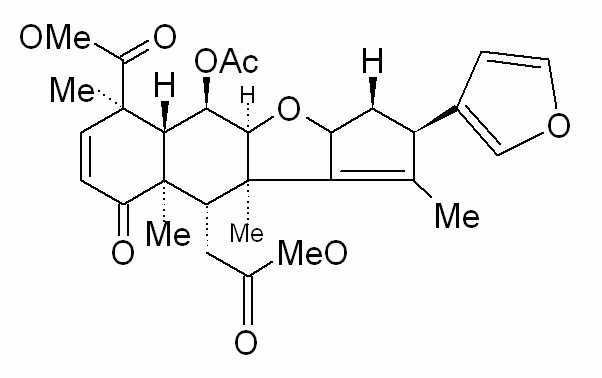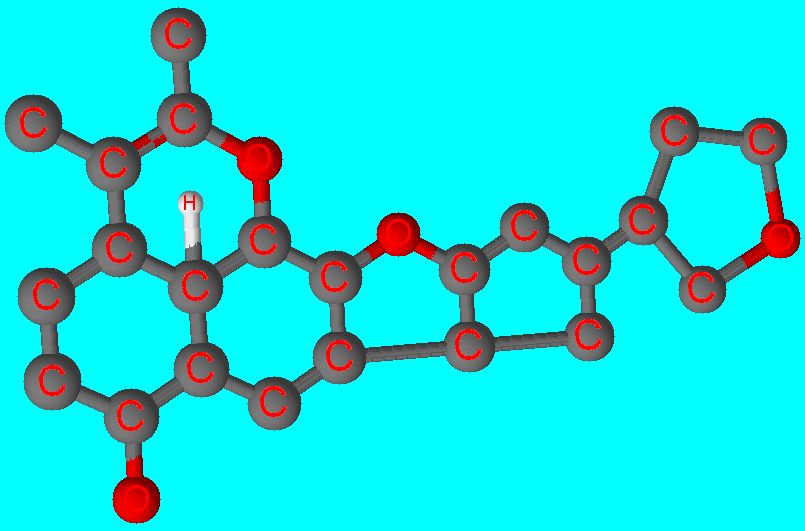Medicinal Effects of Neem
| |
 |
Introduction
From the very beginning of civilization, mankind has depended upon medicinal herbs to treat a different kinds of diseases, disorders and injuries.Neem is a large evergreen tree with long spreading branches can reach a height of 15-20m.Its botanical name is Azadirachta indica and it belongs to the family of Meliaceae, the mahogany family.It also goes by different names such as Indian Lilac, Margosa tree, Nim or nimb tree. [1]
For centuries the Neem tree has been known as the wonder tree of India, traditionally parts of neem tree was used in ayurvedic remedies to fight against common diseases and it is most ancient, widely used herbs in the world. Neem tree has adapted to wide range of climates , it thrives well in hot and cold weather where the maximum temperature is high as 49 ° C and tolerates cold up to 0° C on altitudes up to 1500m.Neem grows almost all types of soils with pH upto 8.5.[2]
Origin
Neem tree grows naturally in India and Sri Lanka, and has been successfully planted in other parts of the world including Indonesia, Australia , and Africa.
Medicinal Effects
Pharmacological Effects: Neem is used for treatment of dermatologic , gastrointestinal disease , immune dysfunctionm respiratory disease , inflammatory infection because of the following compounds found in different parts of the neem plant.The highest concentrations of following compounds are found in the leaves and seeds.[3]
- Nimbin: anti-inflammatory, anti-pyretic, anti-histamine, anti-fungal
- Nimbidin: anti-bacterial, anti-ulcer, analgesic, anti-arrhythmic, anti-fungal
- Ninbidol: anti-tubercular, anti-protozoan, anti-pyretic
- Gedunin: vasodilator, anti-malarial, anti-fungal
- Sodium nimbinate: diuretic, spermicide, anti-arthritic
- Quercetin: anti-protozoal
- Salannin: insect repellent
- Azadirachtin: insect repellent, anti-feedant, anti-hormonal
Adverse Effects: There are no reported side effects in adults with the use of neem at normal doses. Neem is found to be toxic if consumed in large amounts. In infants, it can produce symptoms like those of Reye syndrome.[4]
Chemical Information
"Nimbin is the first bitter compound isolated from neem oil, more than 135 compounds have been found , which are divided into two major classes: isoprenoids. The isoprenoids include diterpenoids and triterpenoids containing protomeliacins, limonoids, azadirone and its derivatives, gedunin and its derivatives, vilasinin type of compounds and Csecomeliacins such as nimbin, salanin and azadirachtin. The nonisoprenoids include proteins(amino acids) and carbohydrates (polysaccharides), sulphurous compounds, polyphenolics such as flavonoids and their glycosides, dihydrochalcone, coumarin and tannins, aliphatic compounds, etc. " [5]
Nimbin
Molecular Formula C30H3606 and CA index Name 2H-Cyclopenta[b]naphtha[2,3-d]furan-10-acetic acid.

Drawn using Chemsketch

Drawn using Chemsketch 3D Viewer
Isolation and Synthesis
According to the research conducted by Gurulingappa Hallur, Apporba Sivramakrishnan, and Sujatha V. Bhat, Spectral studies and chemical transformations were used to study the structure of compounds in neem oil. Chemical structures were considered as intermediates between A- ring econes and 1,3 -diols among the Azadirchta Indica tetranortriterpenoids. Nimbin and other associated group of compounds have been isolated from a methanol extract of neem oil at room temperature. The concentrated methanol extract was shaken with petroleum ether to remove any fatty material . The insoluble residue was subjected to column chromatography over silica gel. After repeating chromatography again over silica gel yielded 0.873 gm of nimbin along with other compounds.
[7]
In 2006, Pierluigi Caboni, Giorgia Sarais, Alberto Angioni, Ana Juan Garcia, Francesco Lai, Fabrizio Dedola, and Paolo Cabras conducted the experiment known as Vacuum Liquid Chromatography (VLC) .This experiment is same as that of Gurulingappa Hallur and others. Where as in this experiment "The fraction containing Nimbin was purified with a 60 cm glass column packed with silica gel (80 g). The column was then eluted with a mixture of ether petroleum-diethyl ether (50:50 v/v) yielding 42 mg of nimbin". [8]
Interesting Facts
Neem is believed to be of divine origin in Hinduism. In India the Neem tree is believed to be the home of one of the Indian Godess, who appears in mythology as healer of smallpox. People plant the tree in front of houses to protect against disease. When a child is born, people use them to decorate their huts and dwellings so that they will be blessed with divine help. Today the shade-giving Neem tree is still planted on avenues and fields because it freshens the air and keeps away insects. Because of its numerous different effects, Neem is sometimes referred to in India as "The Village Pharmacy". Neem twigs are also used there as tooth brushes. The young twigs are chewed until they are frayed and then used for brushing the teeth.[6]
Bibliography
Web Search Log
[1] Plant Cultures Homepage, 2007. Retrieved February 27, 2007, from http://plantcultures.org.uk/plants/neem_plant_profile.html
[2] Neem Foundation, 2007. Retrieved February 27, 2007, from http://www.neemfoundation.org/growing_neem.htm#ideal%20climate
[3] Neem: The Village Pharmacy, 2007. Retrieved February 27, 2007, from http://netowne.com/alt-healing/ayurveda/
[4] Drugs information online, 2007. Retrieved February 27, 2007, from http://www.drugs.com/npc/neem.html
[5] Biological activities and Medicinal Properties of Neem, 2007. Retrieved February 27, 2007, from http://www.ias.ac.in/currsci/jun102002/1336.pdf
[6] Neem: Interesting Facts, 2007. Retrieved Feburary 27, 2007, from http://www.wala.de/english/pflanze/archiv/neem.htm
[7] Hallur, Gurulingappa; Sivramakrishnan; Bhat, Sujata V; American Chemical Society 65(8),1177-1179, 2002 , " Three New tetranortriterpenoids from Neem Seed Oil" ACS Publications. GMU. 4 March . 2007. Keyword :Nimbin
[8] Caboni, Pierluigi; Sarais, Giorgia; Angioni Alberto; Garcia, Ana Juan; Lai, Francesco; Dedola, Fabrizio; and Cabras, Paolo; American Chemical Society 54 (26), 10026 -10032, 2006, "Residues and Persistence of Neem Formulations on Strawberry after Field Treatment" " ACS Publications. GMU. 4 March . 2007. Keyword :Nimbin